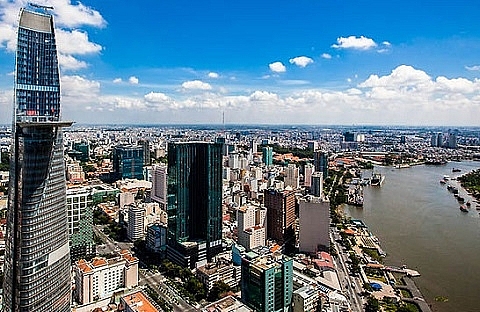ICAEW: Moderate growth forecast of 5 per cent for ASEAN economies
 |
| Southeast Asia's economic growth will be moderate this year |
Given the large export-orientated manufacturing base of most Asian economies, the recent resurgence in global trade has largely benefitted the region in 2017.
With firms ramping up production and investment to accommodate rising external demand, import growth has nonetheless accelerated over the last 12 months, making net exports' contribution to growth insignificant. Instead, exports' most important contribution to growth is their indirect impact on domestic demand through spill-over on investment and consumption.
At the aggregate level, most open economies in Asia have been experiencing an increase in private sector investment, as a result of a pick-up in external demand. For example, South Korea, Malaysia and Thailand all registered a notable acceleration in investment expenditure in 2017.
In Malaysia, as well as Indonesia, the pick-up in investment is driven by the recovery in commodity prices. In Indonesia, in particular, domestic direct investment in the primary sector increased by nearly 62 per cent in nominal IDR terms in the first three quarters of 2017.
Looking ahead, fundamentals remain encouraging for continued private sector investment and growth in Asia. Firstly, world trade growth is expected to remain robust, rising by 5.2 per cent in 2018, down from 6.2 per cent in 2017.
| With all factors considered, the current outlook still paints a relatively promising picture for the region this year. |
Secondly, business sentiment is high and firms are upbeat about the opportunities provided by China’s One Belt One Road initiative and the resurrected Comprehensive and Progressive Agreement for Trans-Pacific Partnership (CPTTP), and finally, owing to a relatively muted outlook for inflation and FX, interest rates are unlikely to rise significantly over the next 12 months.
Sian Fenner, ICAEW economic advisor, said: “Buoyed by the recent cyclical upturn in world trade, most Asian economies registered faster-than-expected growth in 2017. We expect the same trends to persist this year, though growth is expected to moderate. As a whole, ASEAN economies are still set to experience GDP growth exceeding that of 2012-2016.”
Mark Billington, ICAEW regional director, South-East Asia, said: “With all factors considered, the current outlook still paints a relatively promising picture for the region this year. We maintain our forecast of a moderate growth for the region at 5 per cent, as the momentum from 2017 will extend into this year and growth will be underpinned by the same drivers that have made last year such a success.”
What the stars mean:
★ Poor ★ ★ Promising ★★★ Good ★★★★ Very good ★★★★★ Exceptional
Related Contents
Latest News
More News
- 72 nations sign landmark Hanoi cybercrime convention (October 26, 2025 | 18:00)
- UN Secretary-General commends Vietnam’s global leadership (October 26, 2025 | 09:00)
- APEC finance ministers convene to tackle regional challenges (October 22, 2025 | 17:31)
- Rewiring global trade: ASEAN’s rise as supply chain hub (October 17, 2025 | 11:40)
- Vietnam attends first World Nuclear Week Forum in Russia (September 26, 2025 | 10:50)
- Vietnam attends 69th session of IAEA General Conference (September 16, 2025 | 10:00)
- ADB, WB pledge over 12 billion USD for ASEAN power grid, renewable energy projects (August 15, 2025 | 14:18)
- Lowy Institute proposes AI-based tobacco control solutions for ASEAN (August 15, 2025 | 14:14)
- Cloud computing policy to position Malaysia as regional hub by 2030 (August 15, 2025 | 14:11)
- Thailand, Cambodia suffer numerous cyber attacks (August 05, 2025 | 16:19)

 Tag:
Tag:


























 Mobile Version
Mobile Version